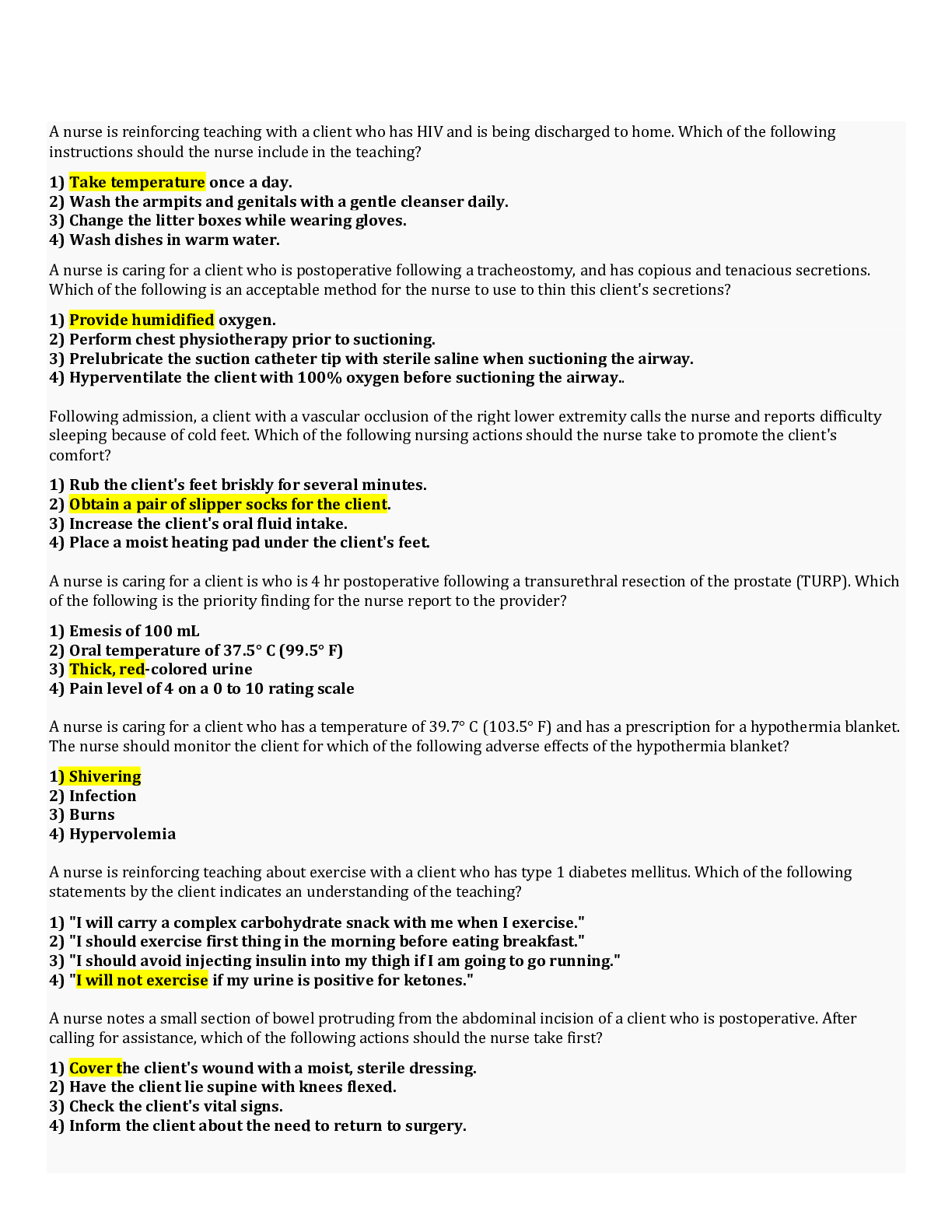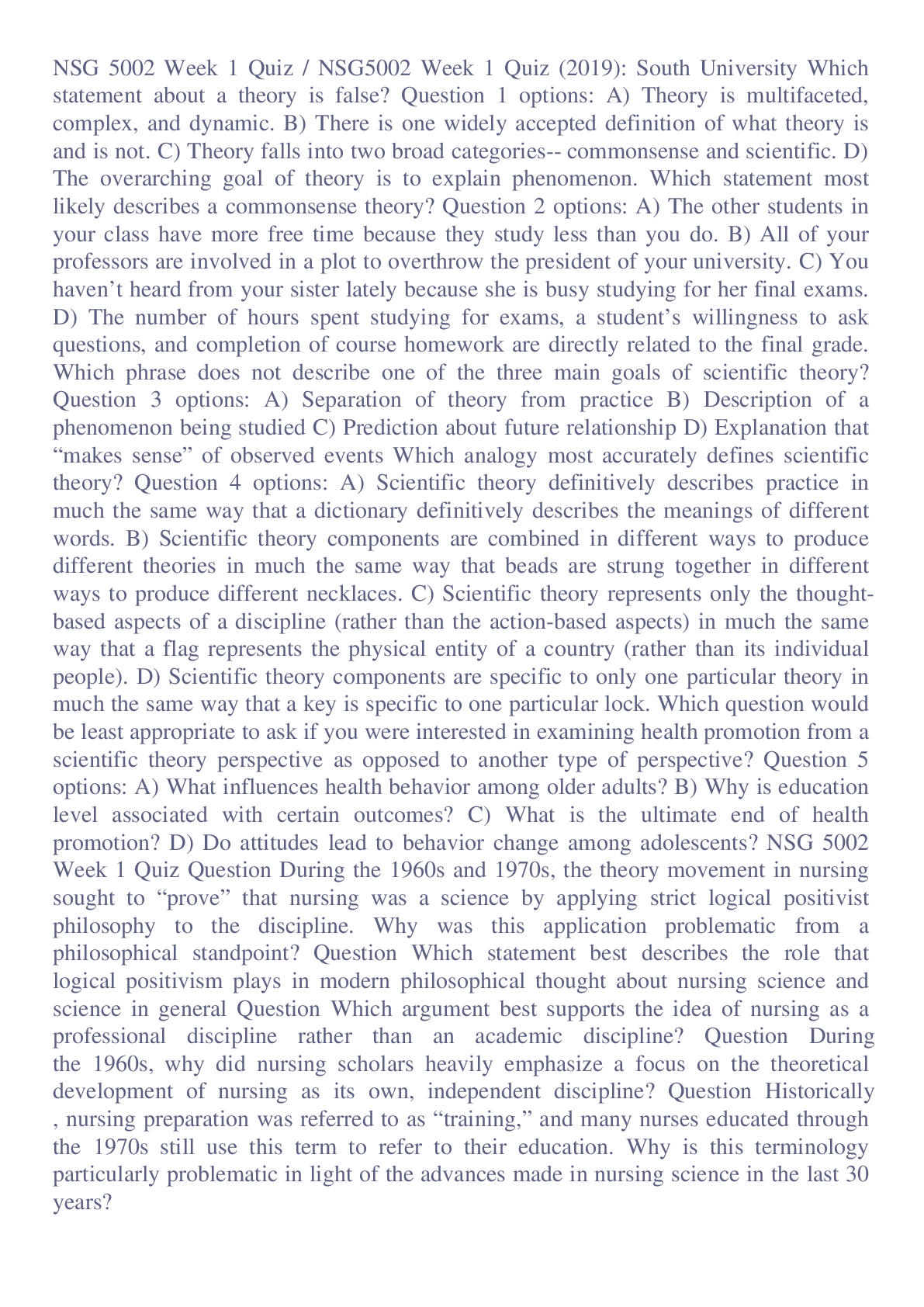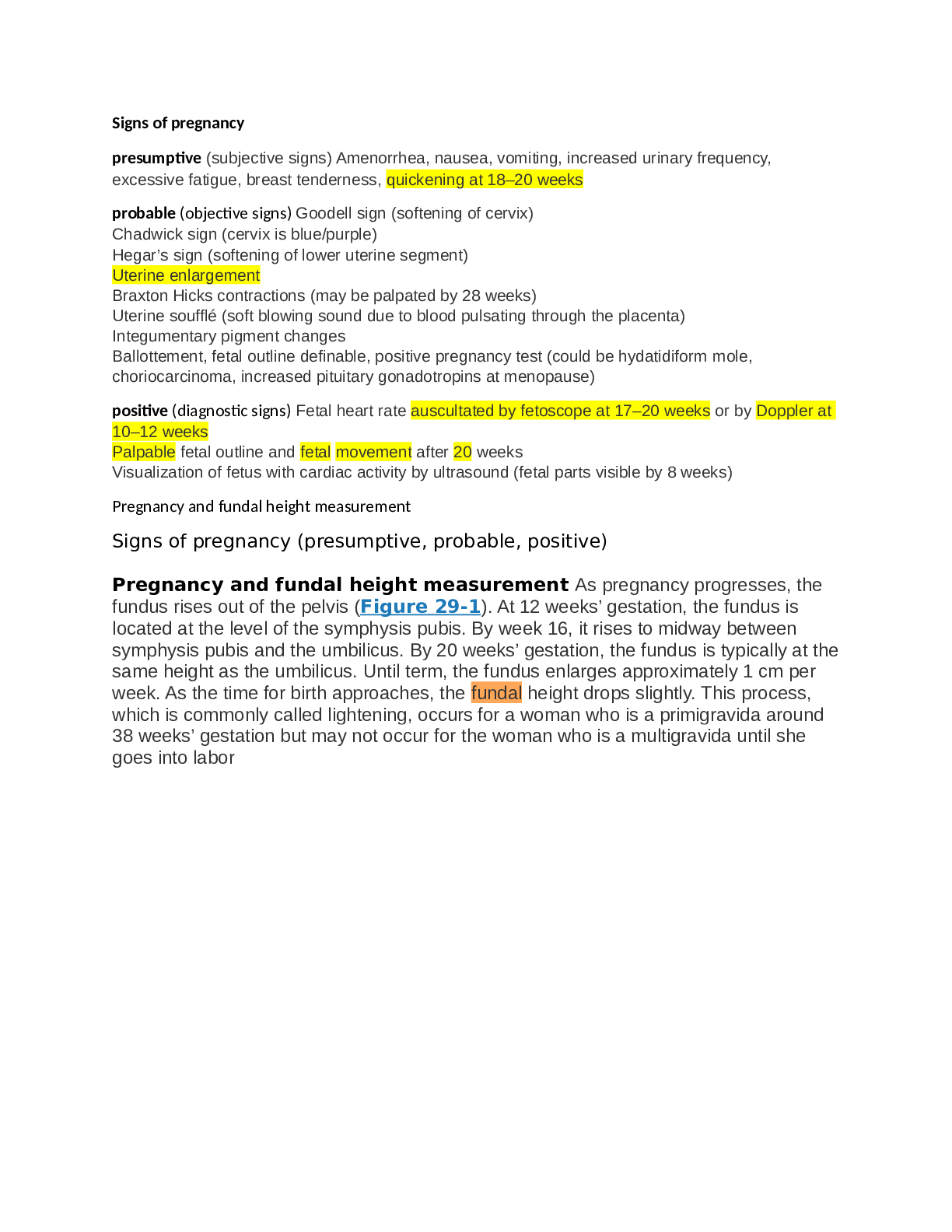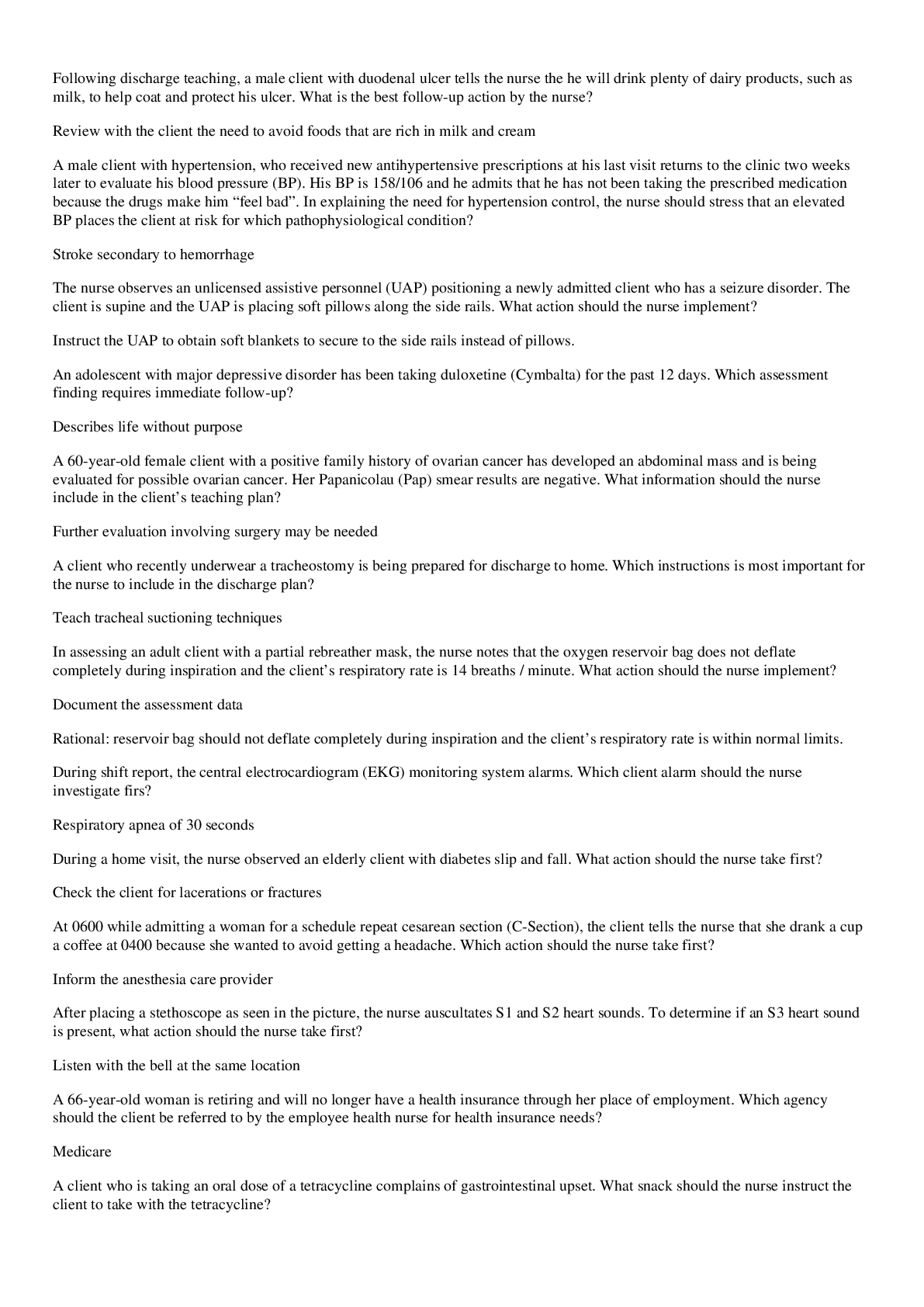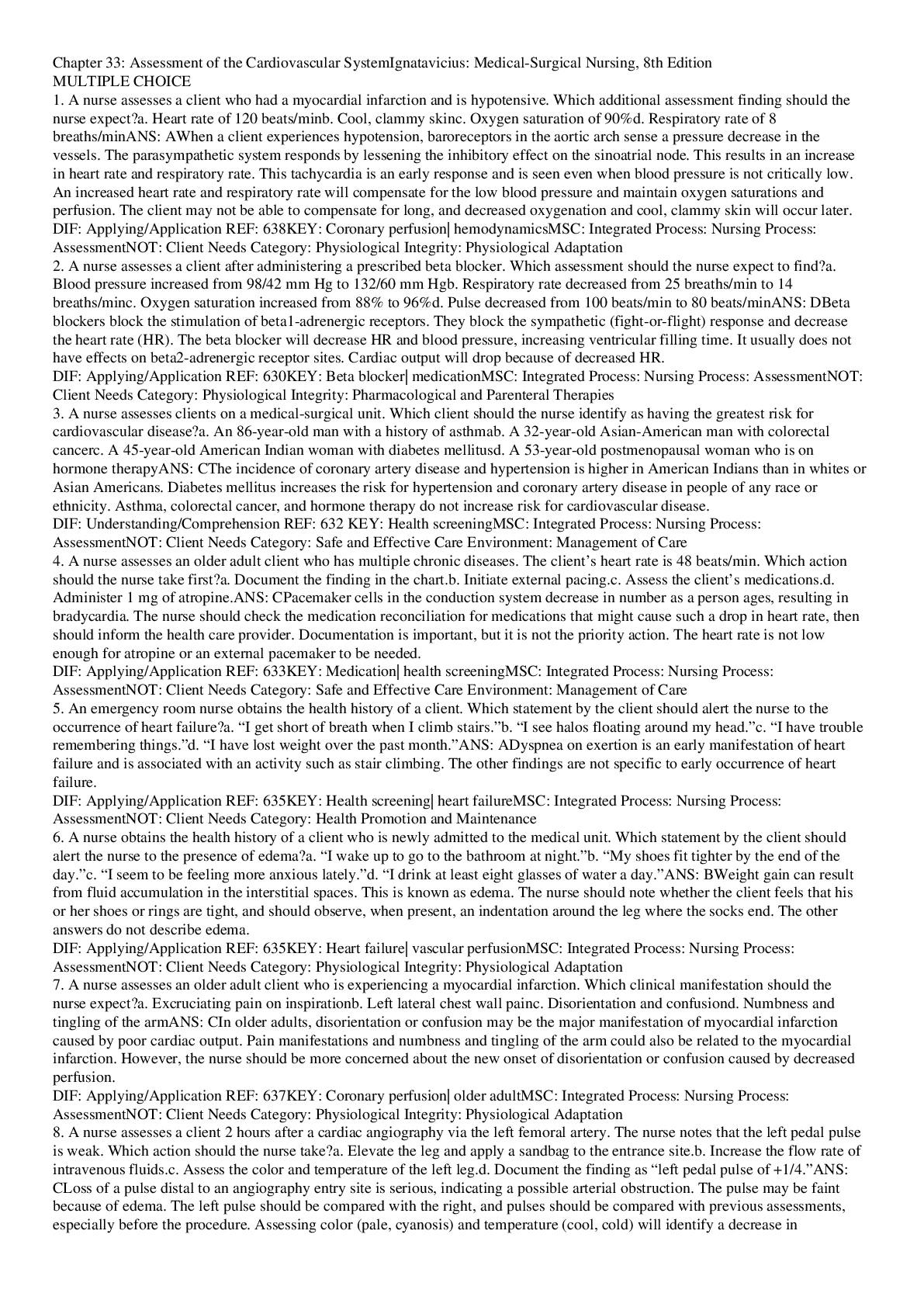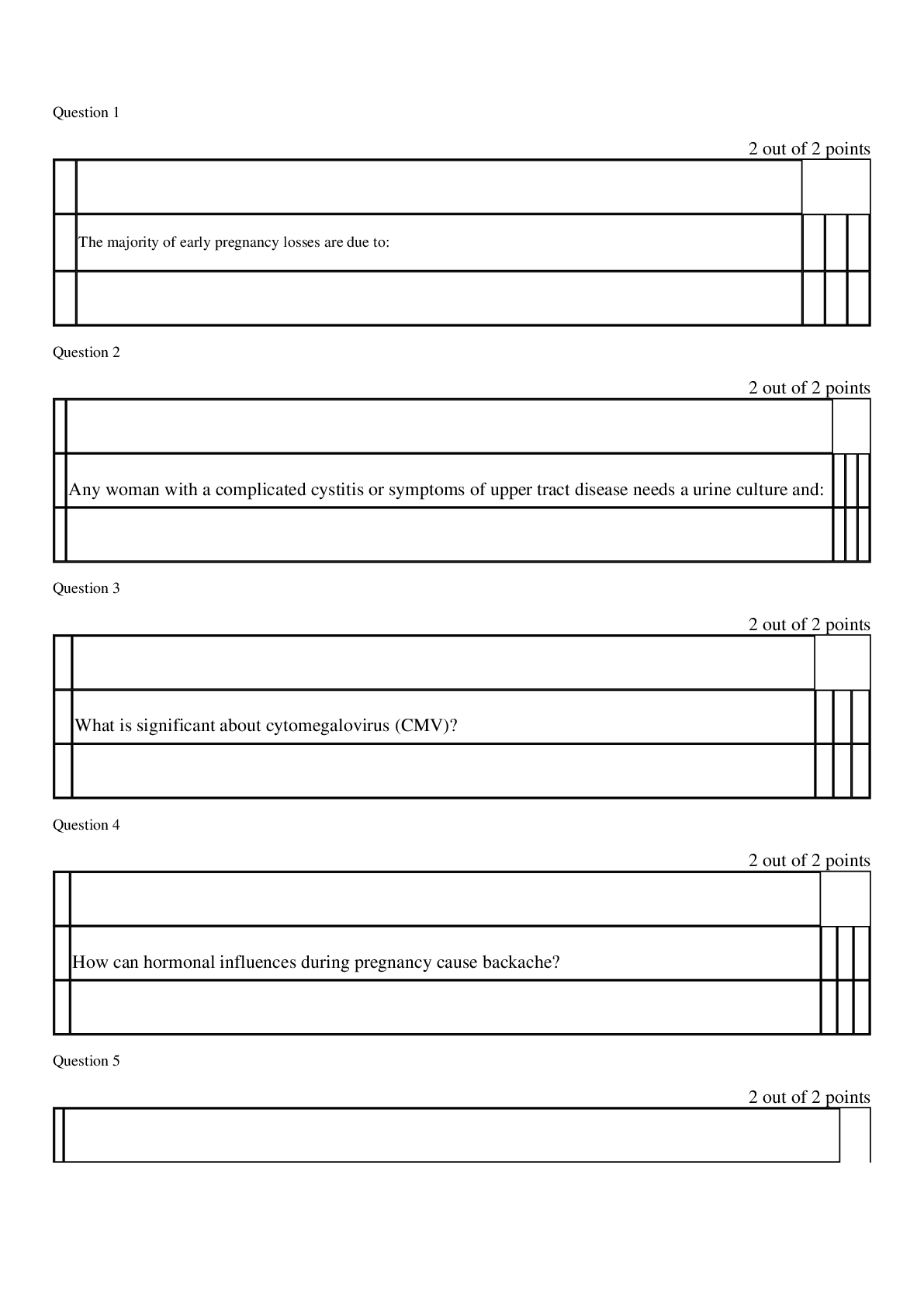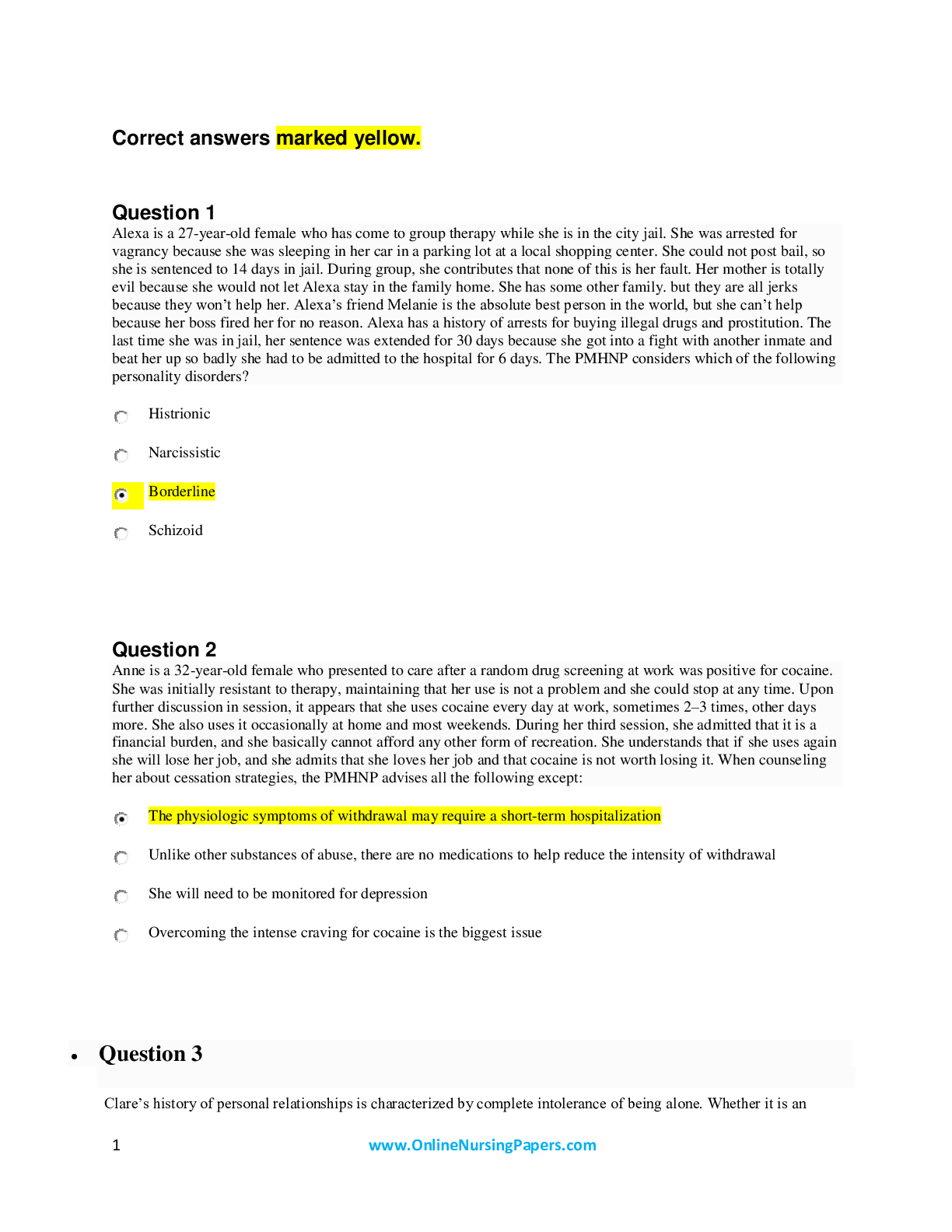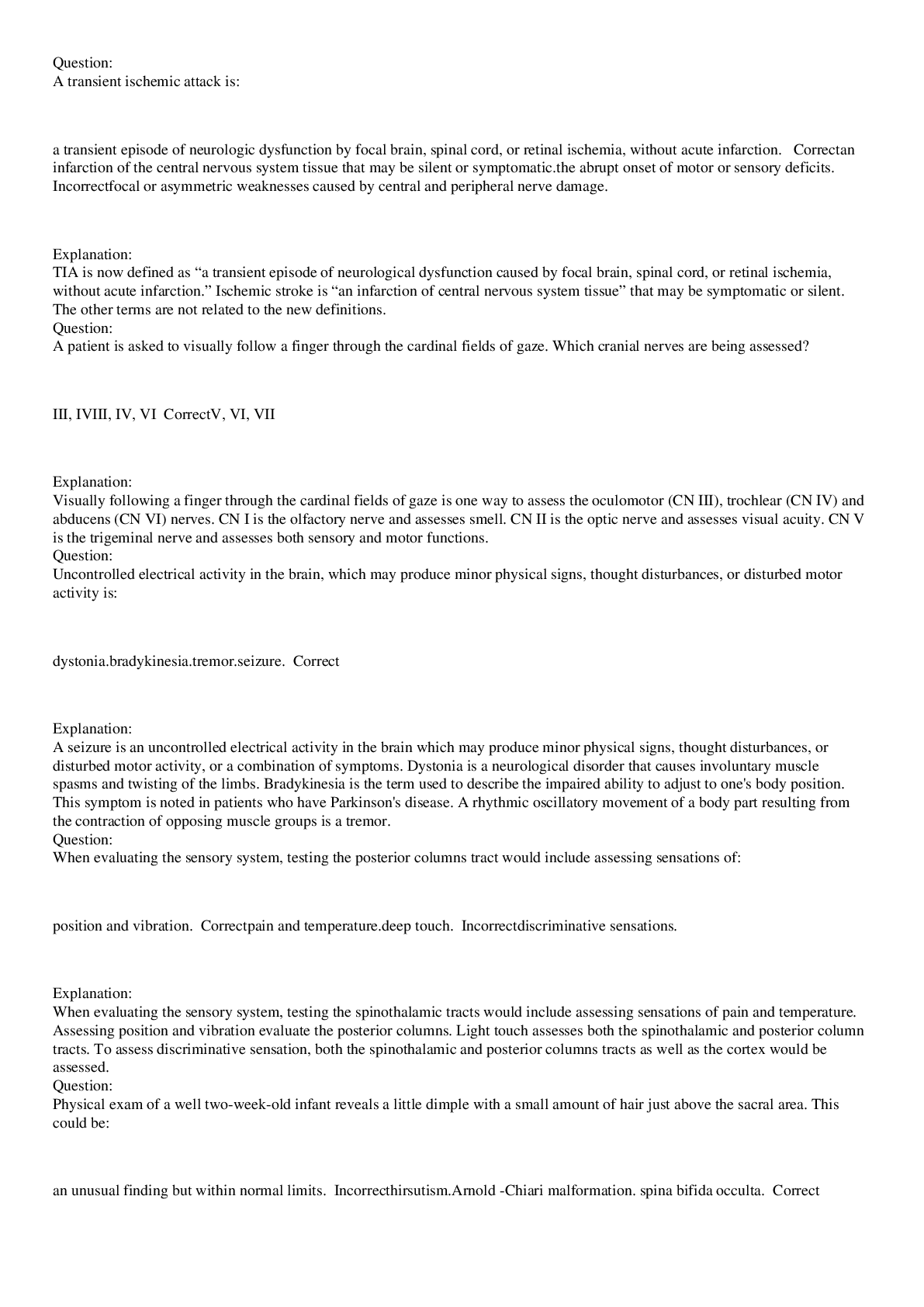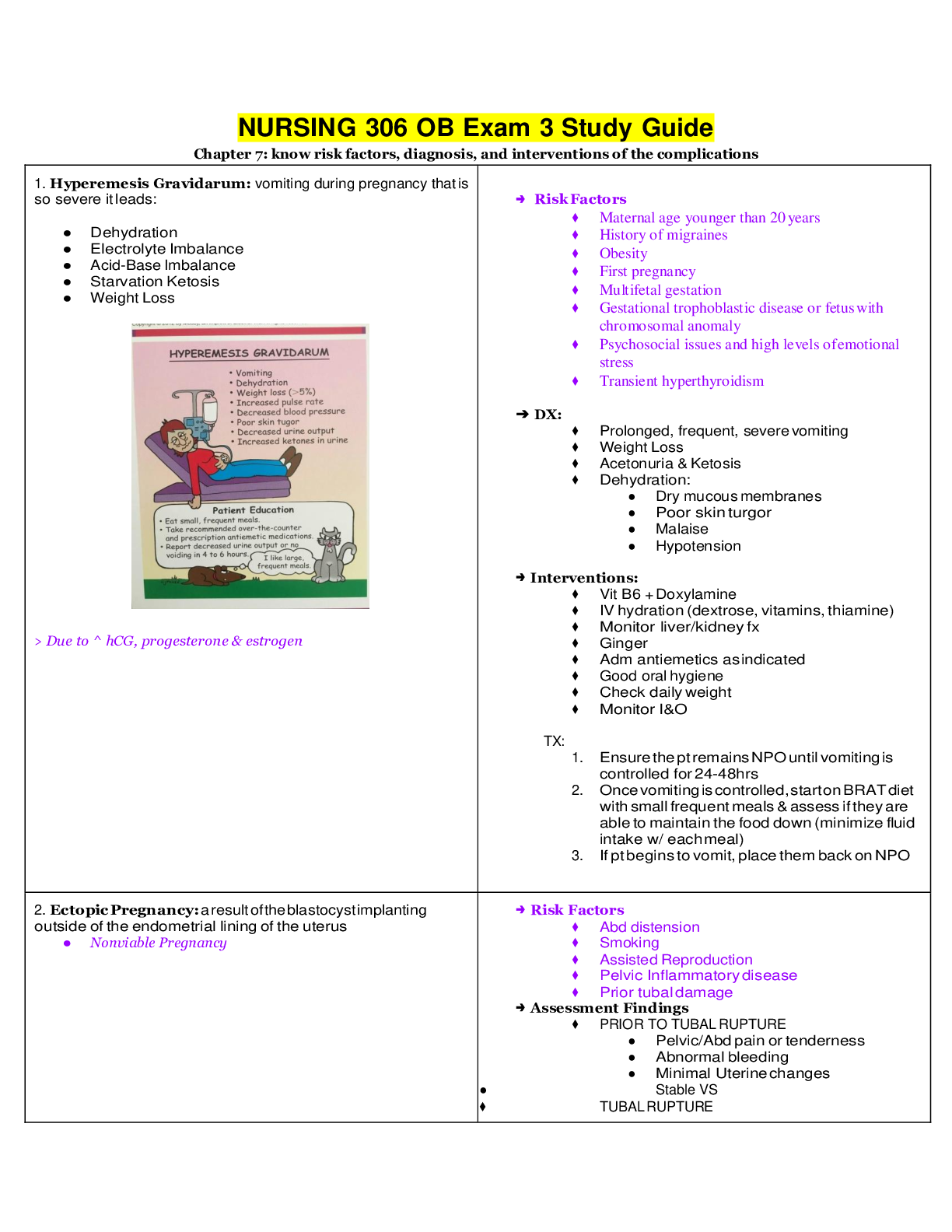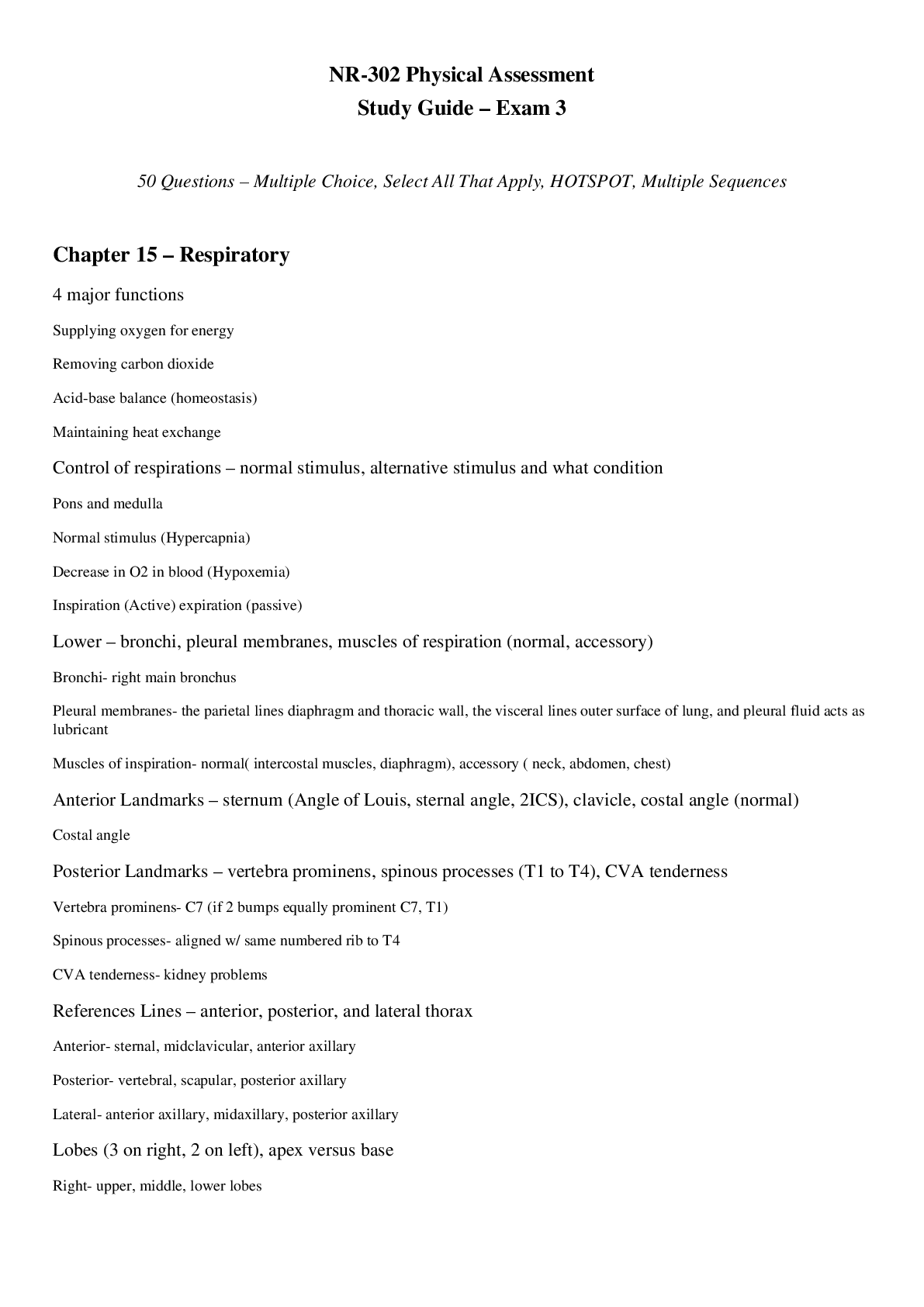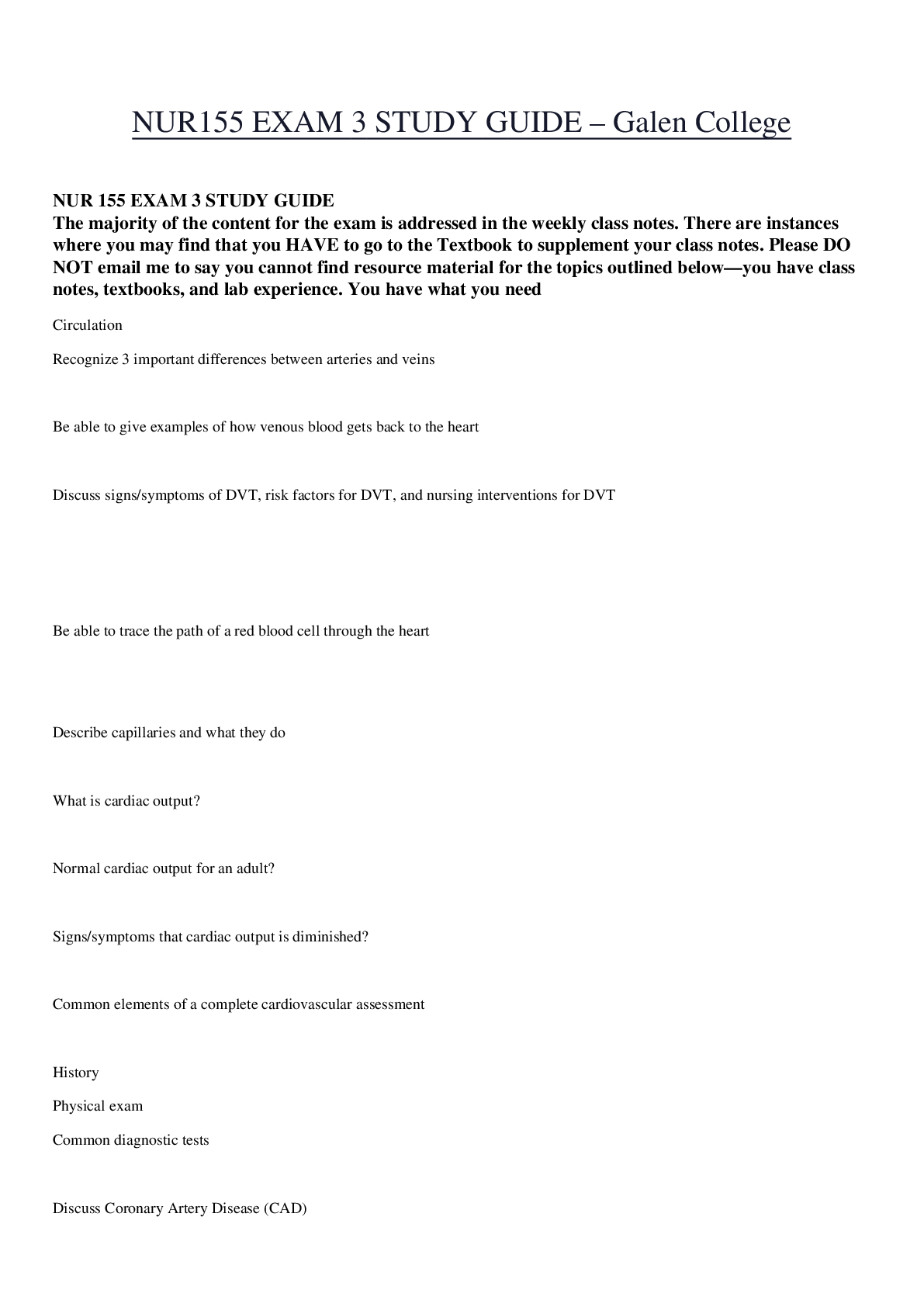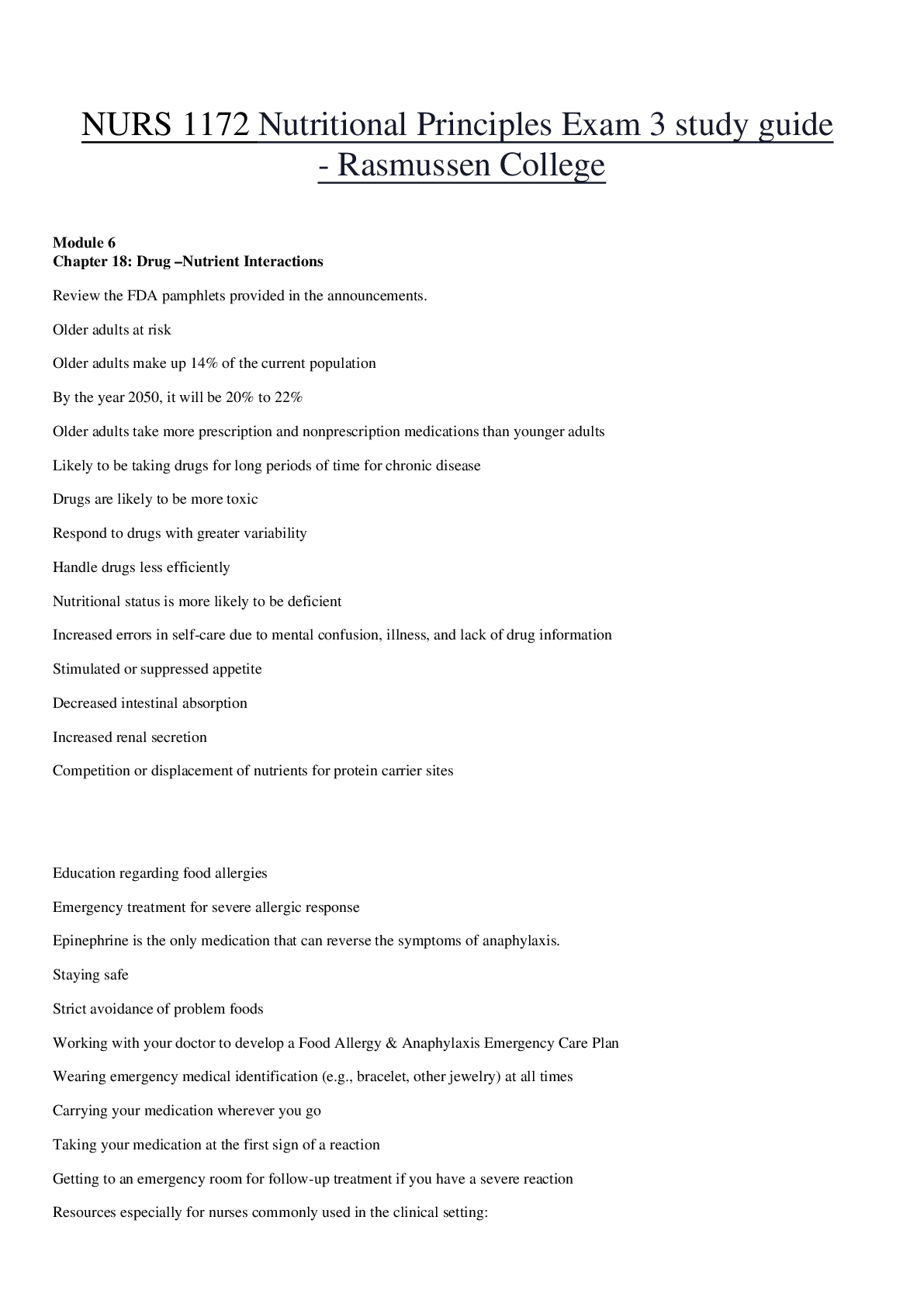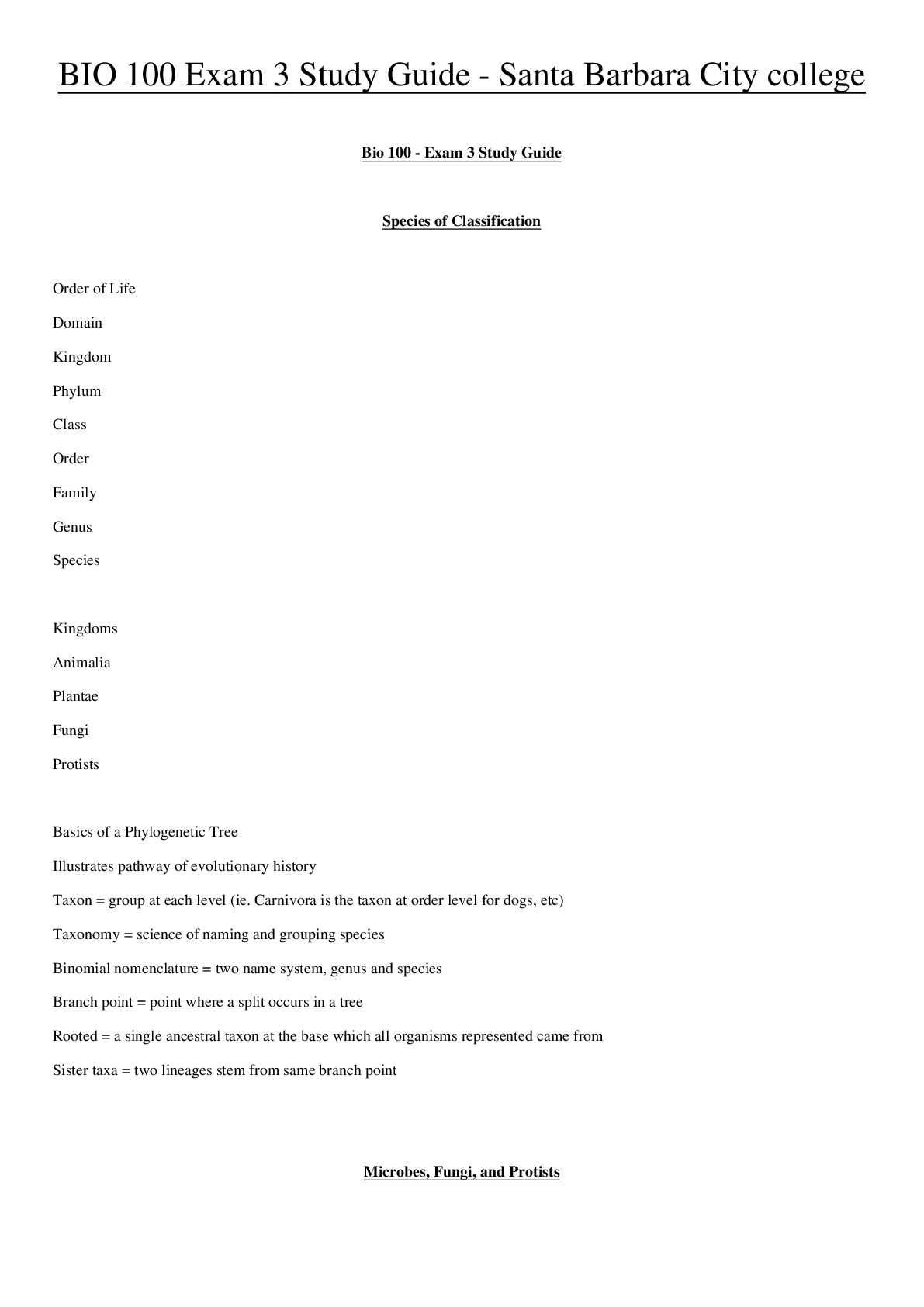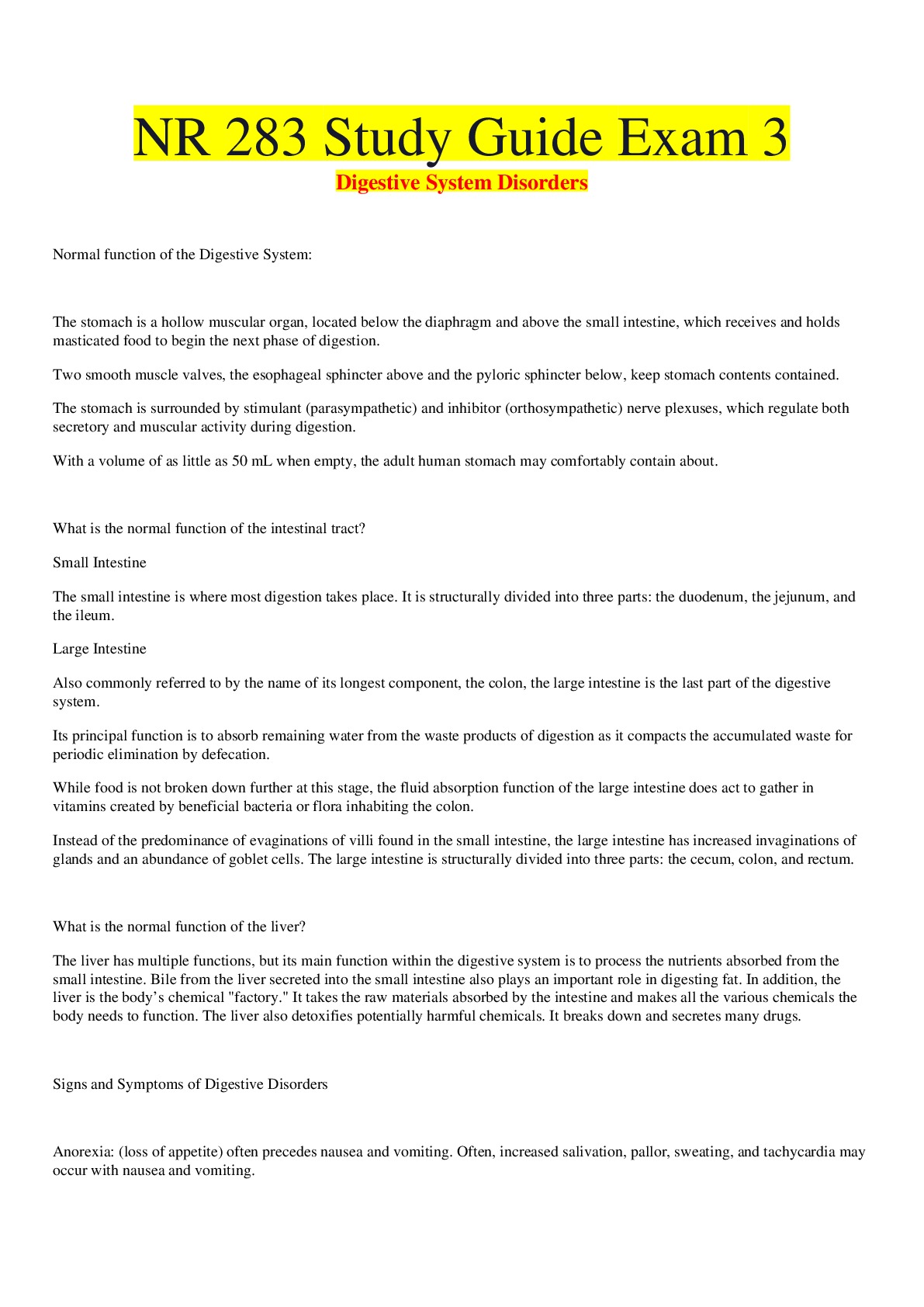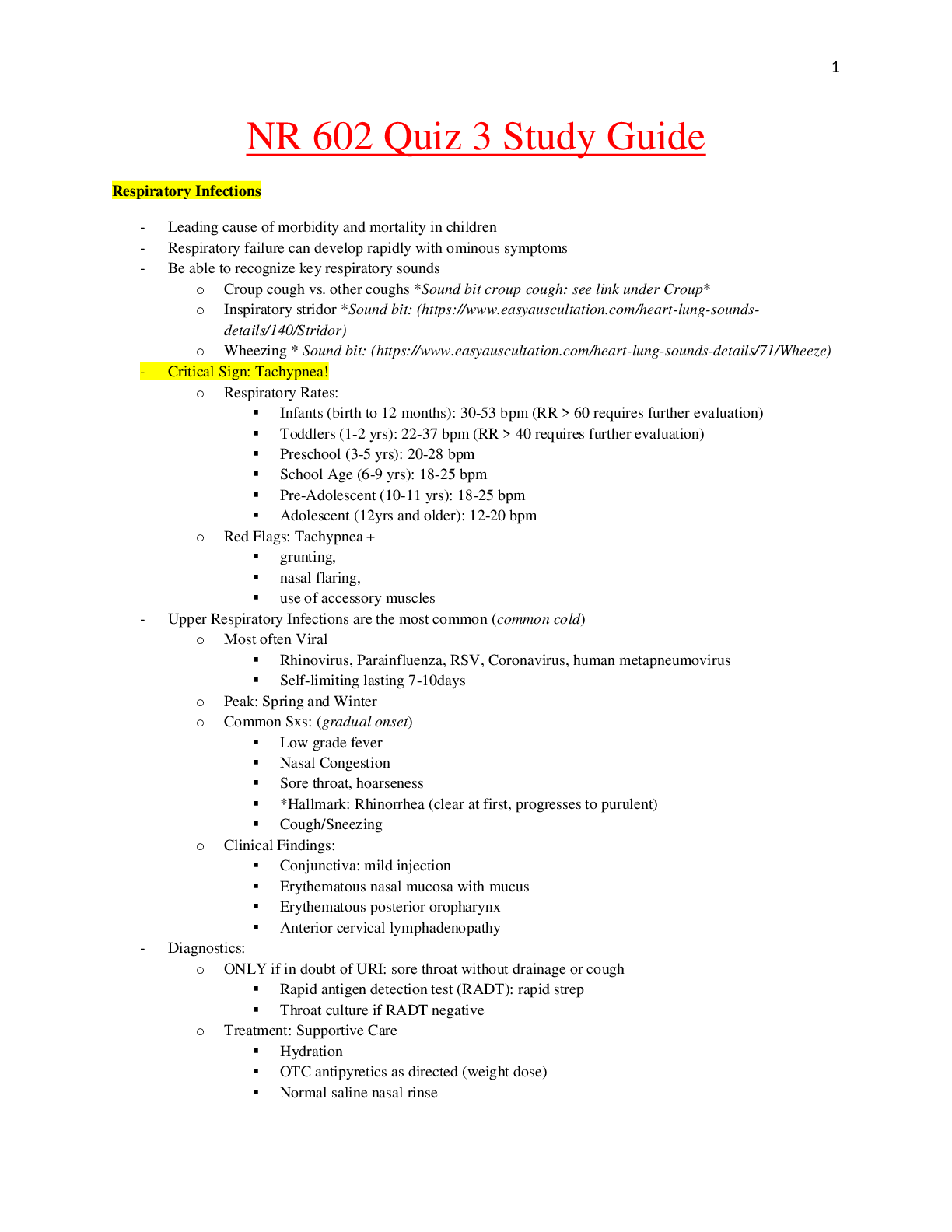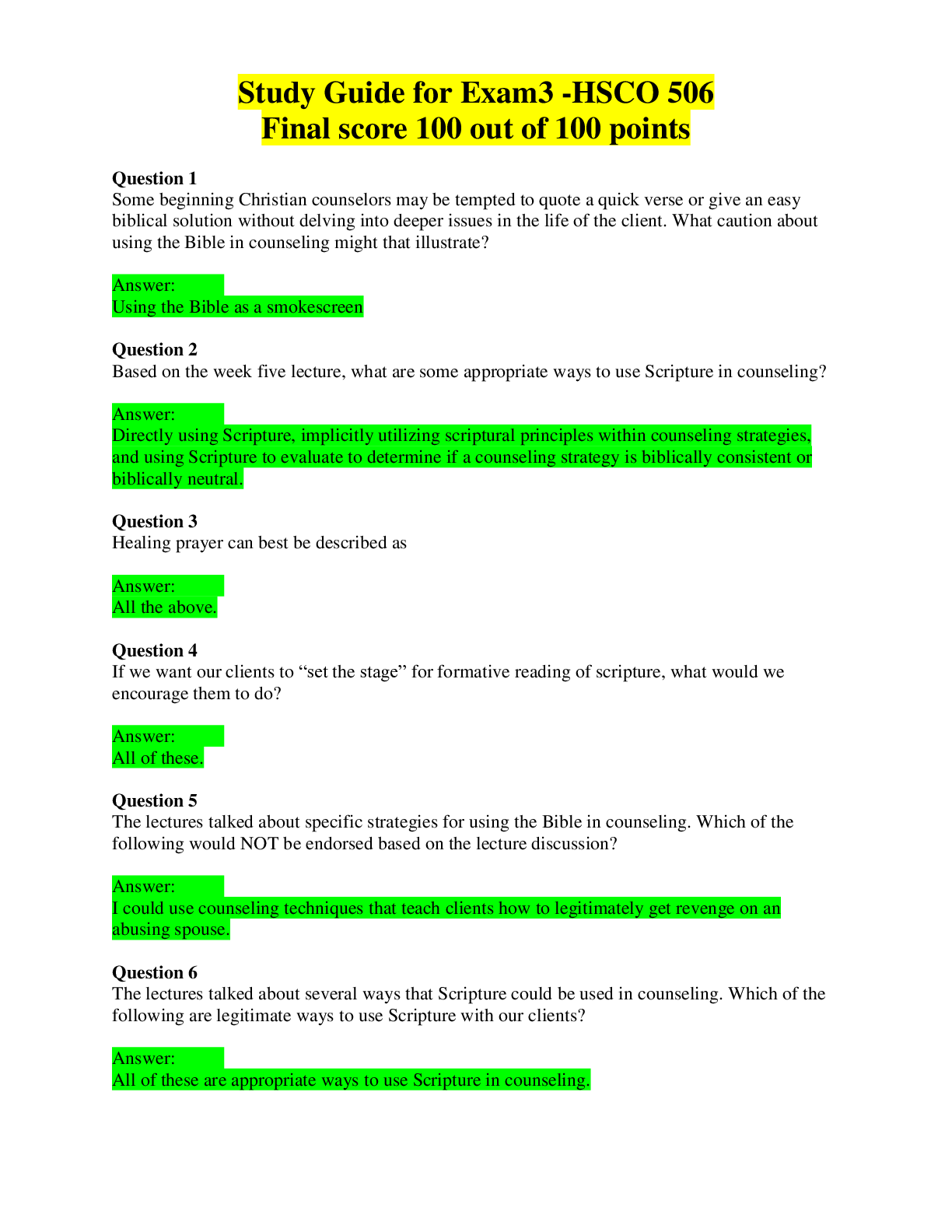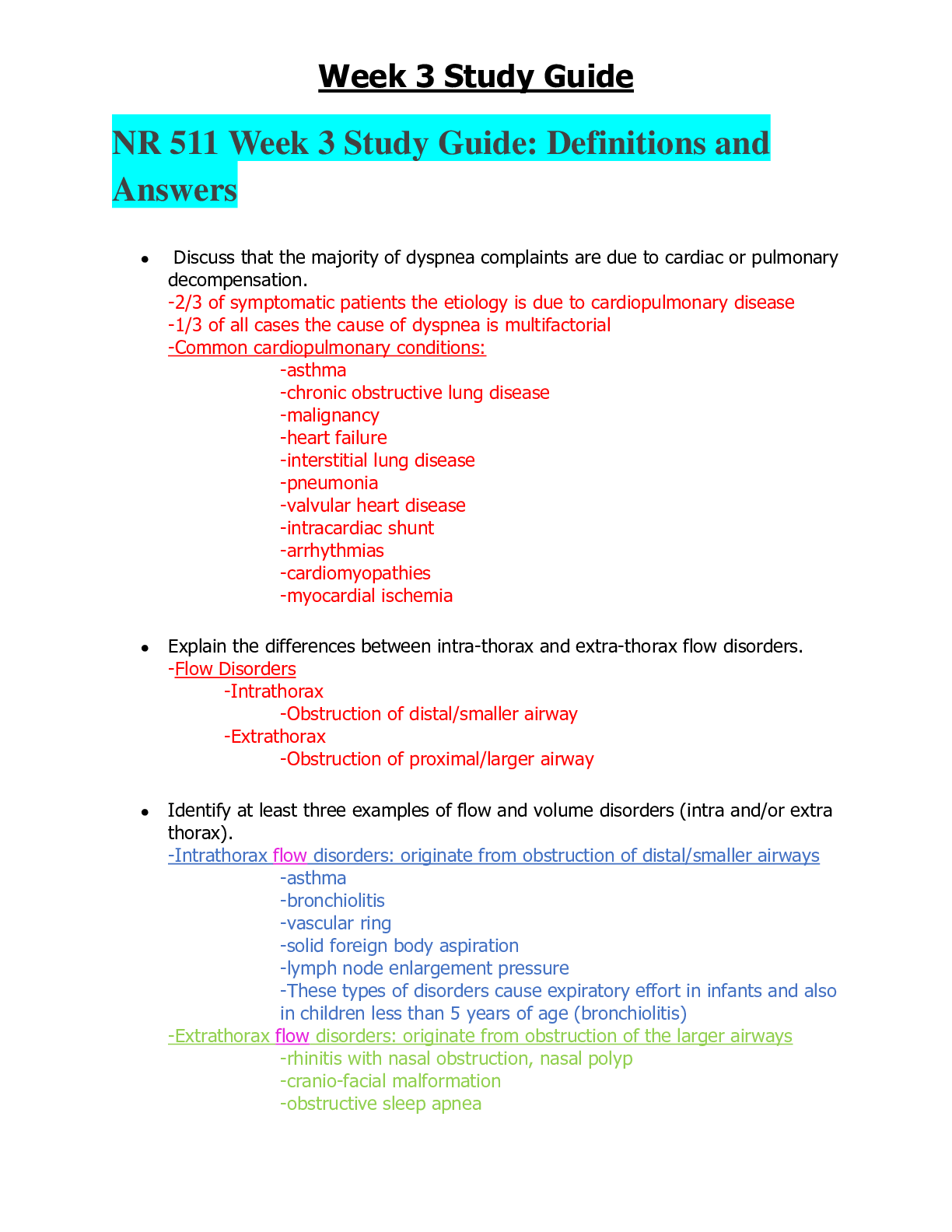*NURSING > STUDY GUIDE > NUR 2488 Mental Health Exam 3 Study Guide 2021 Chapter 12-28; Rasmussen College (All)
NUR 2488 Mental Health Exam 3 Study Guide 2021 Chapter 12-28; Rasmussen College
Document Content and Description Below
Chapter 12 Somatoform Disorders- highest priority nursing interventions (table 12-3 & 12-4) & secondary gains o Attempt to help the patient improve overall functioning through the development ... of effective coping and communication strategies. Through the use of identification and expression of emotions or issues, patients no longer rely only on medical symptoms to unconsciously display their needs. o Highest priority: Shift focus from somatic symptoms to feelings. o Secondary gains: benefits derived from the symptoms alone. Ex: In the sick role, the patient is not able to perform normal family, work, and social functions and receives extra attention from loved ones. If a patient derives personal benefit from the symptoms, relinquishing the symptoms is more difficult. Hypochondriasis (Illness Anxiety Disorder)- signs/symptoms o Patients with this disorder may or may not present with somatic symptoms, and if they do, the symptoms are usually mild. o Alarmed by the potential implications of any disorder than with the disorder itself, and are alarmed with any new bodily sensations. Patients can misinterpret normal physical sensations such as sweating, abdominal cramping, or awareness of heartbeat as indicative of disease. Have fears of having a serious disease. o Exhibit high levels of anxiety and alarm about their health lasting at least 6 months and may either excessively check for problems or avoid medical care. It is important to consider other possible diagnoses such as anxiety disorders. Conversion Disorder- define and nursing interventions o Presents with one or more symptoms of impaired motor or sensory function. o Causes significant distress to the patient and impaired social or occupational functioning. Symptoms are further specified as including weakness or paralysis, abnormal movement, swallowing or speech difficulties, seizures or attacks, sensory loss or anesthesia, or symptoms involving the senses (blindness or loss of smell). o Demonstrate lack of concern regarding the seriousness of symptoms. o Nursing interventions Use a straight forward approach Be supportive, yet ASSERTIVE with them Pt independence is important, they need to be able to take care of themselves. Dissociative Fugue o Often associated with dissociative amnesia, which is amnesia related to a traumatic accident. Fugue is when the patient flees from their normal life to another location and starts a new life. o Gradually over time, memories of the original life may be triggered. Patients can become confused and embarrassed when the amnesia subsides and memory returns. Body Dysmorphic Disorder- care plan, highest priority o Includes preoccupation with an imagined "defective body part"; obsessional thinking (thinking they are ugly or deformed) and compulsive behaviors (such as mirror checking, skin picking, or excessive grooming); and impairment of normal social activities related to academic or occupational functioning. Individuals with BDD are frequently concerned with the face, skin, genitalia, thighs, hips, and hair. o Individuals with BDD have higher rates of suicidal ideation, suicide attempts, and completed suicides than individuals who did not meet criteria for BDD. The disorder is often kept secret for many years, and the patient does not respond to reassurance. The pharmacological agents of choice for treating people with BDD are SSRIs, antidepressants, and clomipramine (tricyclic antidepressant) and cognitive behavioral therapy. A second-generation antipsychotic added to an SSRI may help in the more severe delusional form of BDD. Chapter 13 Personality Disorders- describe o Personality disorders range from mild to moderate to severe based on disturbances in functionality. Their relationships with others are problematic, and they rarely reach their potential. They are often socially isolated because of their rigidity, maladaptive coping skills, and control issues that complicate their interpersonal as well as interactions with society. o These patients can act bizarre, anxious, withdrawn, manipulative, or violent, and their behaviors tend to alienate them from the population. Because people with personality disorders are unaware that traits in their own personality makeup are causing problems, they often blame others for their difficulties or even deny they have a problem. o Acknowledge manipulative behavior. Borderline Personality- characteristics &nursing interventions o Identify trigger situations and choose coping strategy. o Feelings of anxiety, dysphonia, and irritability can be intense though short lived. o Poor impulse control is evidenced by recurrent suicide attempts, self-mutilation, and other self-destructive behaviors. Chronic depression is common. o The use of the primitive defense mechanism of projected identification is common in patients with BPD. This occurs when the person projects on an undesirable aspect of the self. o Individuals with BPD often exhibit patterns of high emotional sensitivity, acute responsiveness, and slow return to normal as "emotional dysregulation." This cycle may lead to feelings of deadness, panic, and fury as well as self-mutilation and suicideprone behaviors. These are common responses to threats of separation or rejection. o People with BPD desperately seek relationships to avoid feelings of abandonment and chronic feelings of emptiness. However, their excessive demands, impulsive behavior, and/or uncontrolled anger drives others away. Their relationships are stormy, marked by intense neediness and lack of trust. o When relationships end, the person with borderline personality disorder is often left with feelings of deadness, panic, fury, and intense abandonment. A person with BPD can experience dissociative states under stress. Their frequent use of the defense of splitting not only strains personal relationships but also creates turmoil in health care settings. Dependent Personality- describe o People with dependent personality disorder traits believe they are incapable of surviving if left alone and have an excess need to receive care. They solicit caretaking by clinging and being perversely and excessively submissive. o If others do not initiate or take responsibility for them, their needs remain neglected. Their intense fear of separation and being alone is so great that they tolerate poor, even abusive treatment in order to stay in a relationship, and once a relationship ends there is an urgent need to get into another. o They obsessively ruminate and fantasize about abandonment even when it is not threatened. Their high levels of anxiety intensify their inability to complete anything on their own; they are unable to make decisions without excessive advice and reassurance. Histrionic Personality- nursing interventions o People with histrionic personality disorders manipulate others through their dramatic, rapidly shifting, charming, flamboyant, and sexually seductive behaviors. o Their excessively emotional behavior is an attempt to be and remain the center of attention, love, and admiration that they require. They may act out with displays of temper, tears, and accusations when they are not getting the attention or praise they believe they deserve. o Interactions are often characterized by a seductiveness or provocation to draw others into a relationship or work project, but their attention is usually short-lived since they are subject to constant, sudden emotional shifts and emotional lability. o Their relationships tend to be superficial and shallow and usually do not last long because of their constant need for attention and their insensitivity to the needs of others. Histrionic people lack insight about their role in the failure of relationships. Antisocial Personality- describe o Persistent disregard for and violation of the rights of others with an absence of remorse for hurting others. People with antisocial PD have a sense of entitlement and are very callous. o People who have antisocial personality disorders lack regard for the law and the rights of others and have a history of persistent lying, use of aliases, conning others for personal profit or pleasure, and stealing (deceitfulness). However, they do rely on others to conform to the social norms. o Promiscuity, failure to honor work or financial commitments, and drunk driving are common events in their lives. o Patients impulsively act out feeling of anger and feels no guilt or remorse. o Nursing diagnosis: risk for other- directed violence. [Show More]
Last updated: 1 year ago
Preview 1 out of 17 pages
Instant download
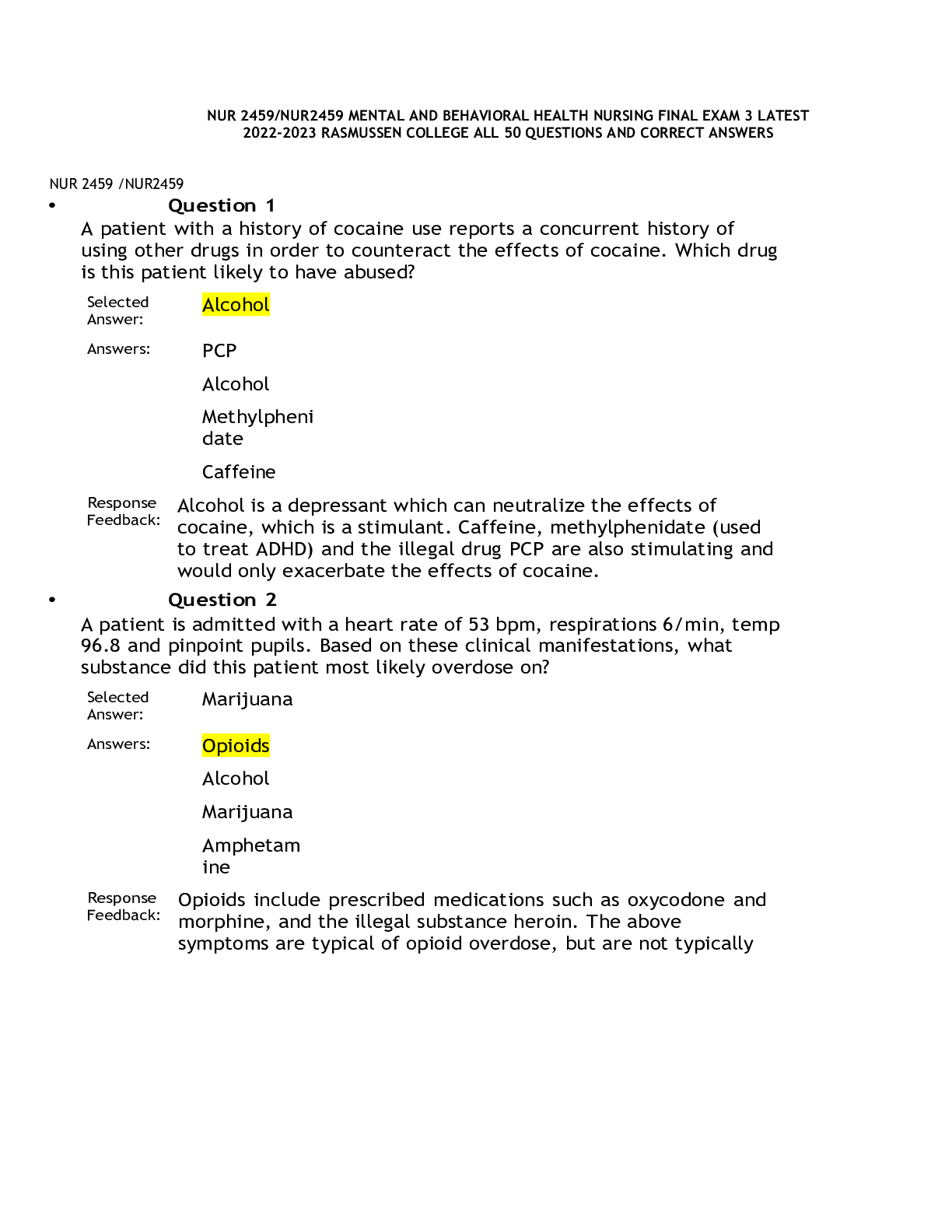
Buy this document to get the full access instantly
Instant Download Access after purchase
Add to cartInstant download
Reviews( 0 )
Document information
Connected school, study & course
About the document
Uploaded On
Mar 01, 2021
Number of pages
17
Written in
Additional information
This document has been written for:
Uploaded
Mar 01, 2021
Downloads
0
Views
49

